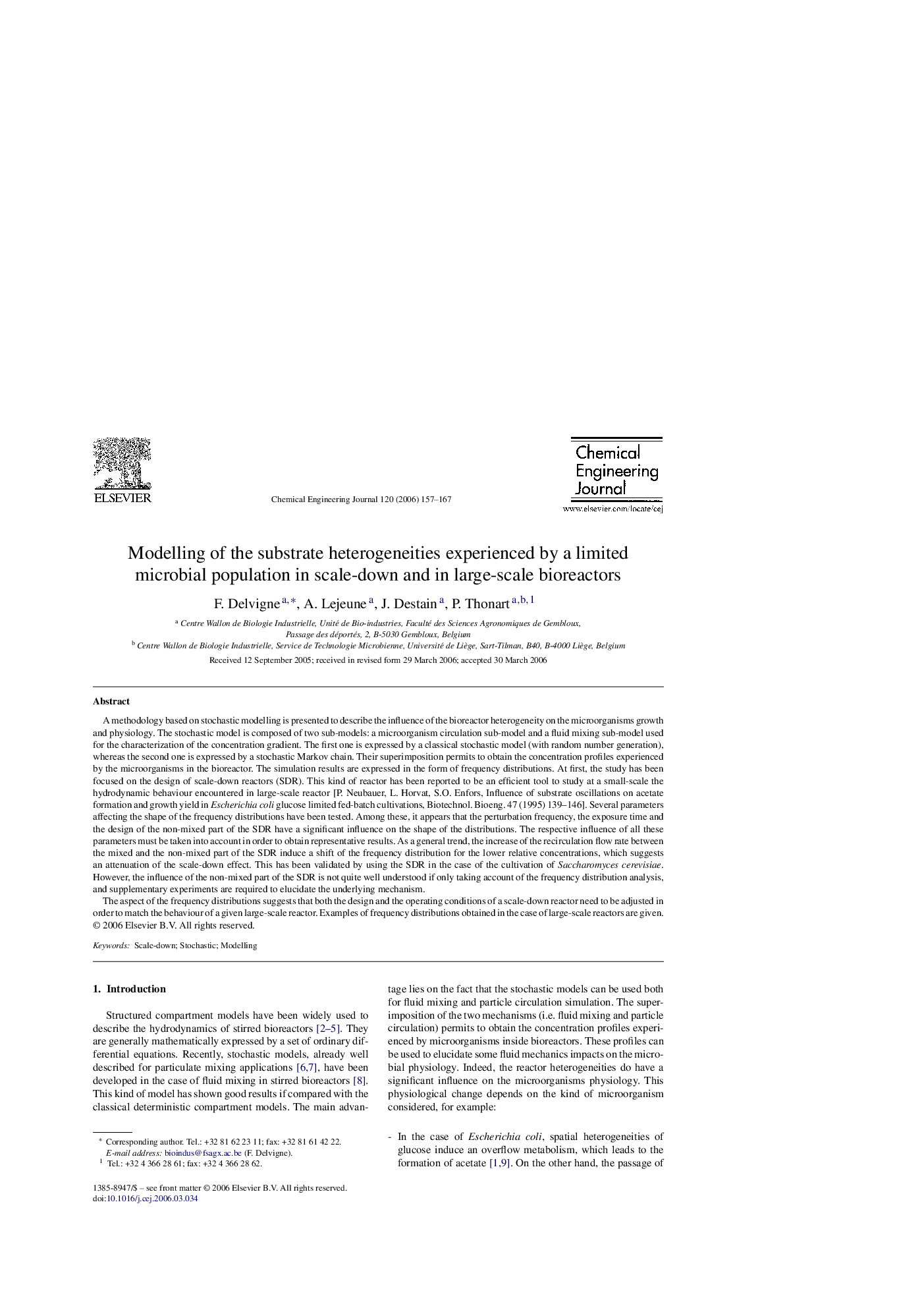| Article ID | Journal | Published Year | Pages | File Type |
|---|---|---|---|---|
| 154173 | Chemical Engineering Journal | 2006 | 11 Pages |
A methodology based on stochastic modelling is presented to describe the influence of the bioreactor heterogeneity on the microorganisms growth and physiology. The stochastic model is composed of two sub-models: a microorganism circulation sub-model and a fluid mixing sub-model used for the characterization of the concentration gradient. The first one is expressed by a classical stochastic model (with random number generation), whereas the second one is expressed by a stochastic Markov chain. Their superimposition permits to obtain the concentration profiles experienced by the microorganisms in the bioreactor. The simulation results are expressed in the form of frequency distributions. At first, the study has been focused on the design of scale-down reactors (SDR). This kind of reactor has been reported to be an efficient tool to study at a small-scale the hydrodynamic behaviour encountered in large-scale reactor [P. Neubauer, L. Horvat, S.O. Enfors, Influence of substrate oscillations on acetate formation and growth yield in Escherichia coli glucose limited fed-batch cultivations, Biotechnol. Bioeng. 47 (1995) 139–146]. Several parameters affecting the shape of the frequency distributions have been tested. Among these, it appears that the perturbation frequency, the exposure time and the design of the non-mixed part of the SDR have a significant influence on the shape of the distributions. The respective influence of all these parameters must be taken into account in order to obtain representative results. As a general trend, the increase of the recirculation flow rate between the mixed and the non-mixed part of the SDR induce a shift of the frequency distribution for the lower relative concentrations, which suggests an attenuation of the scale-down effect. This has been validated by using the SDR in the case of the cultivation of Saccharomyces cerevisiae. However, the influence of the non-mixed part of the SDR is not quite well understood if only taking account of the frequency distribution analysis, and supplementary experiments are required to elucidate the underlying mechanism.The aspect of the frequency distributions suggests that both the design and the operating conditions of a scale-down reactor need to be adjusted in order to match the behaviour of a given large-scale reactor. Examples of frequency distributions obtained in the case of large-scale reactors are given.
